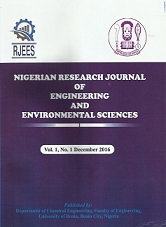Ergonomic Risk Assessment of the Impact of Road Terrain and Vehicle Conditions on Commercial Bus Drivers' Health and Safety
Authors: Olagunju, M.O., Oginni, O.T., Ogidi, M.A., Ogundana, T.O. And Fadiji, E.A.
DOI Info: http://doi.org/10.5281/zenodo.14566085
ABSTRACT
Commercial bus drivers in Nigeria are exposed to a variety of road irregularities and vibrations, including smooth, bumpy, harsh and poor terrain conditions, as part of their daily commute. The study examines the economic risk assessment of road terrain and vehicle impact on commercial bus drivers, focusing on health, and safety aspects. The degree of vibration experienced by seated bus drivers was assessed by utilizing a tri-axial accelerometer to study the dynamic effects of whole-body vibration (WBV) on drivers in south western Nigeria. The findings demonstrated that the (z) vertical displacement was more noticeable than the x and y directions, suggesting that lower-spine diseases, weariness, and musculoskeletal illnesses are brought on by the vibrations. A survey of 200 commercial bus drivers revealed that 70.5% experienced musculoskeletal disorders (MSDs), while 62% experienced one or more forms of disorders in their lower back, shoulder, neck, legs, and wrists. The increasing years of active commercial bus driving is linked to a higher likelihood of developing body pain in drivers. Drivers in professional bus driving experience discomfort in their back, neck, wrists, and ankles, which increases with years of driving. Newer buses with sophisticated suspension systems and a strong maintenance culture are recommended to minimize WBV transmission.
Affiliations: Department of Civil Engineering, Bamidele Olumilua University of Education, Science and Engineering Ikere-Ekiti, Nigeria.
Keywords: Drivers, Road Terrain, Vehicle Conditions, Degree Of Vibration, Health And Safety
Published date: 2024/12/30









